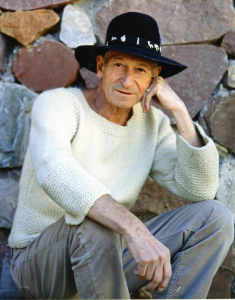 Scripps College will celebrate the life of Professor Emeritus Paul Soldner, artist and innovator in the field of ceramic art, in Seal Court on the Scripps College campus on Saturday afternoon, January 8, at 4 p.m. Soldner died January 3, 2011, at his winter home in Claremont, at age 89.
Scripps College will celebrate the life of Professor Emeritus Paul Soldner, artist and innovator in the field of ceramic art, in Seal Court on the Scripps College campus on Saturday afternoon, January 8, at 4 p.m. Soldner died January 3, 2011, at his winter home in Claremont, at age 89.
One of the most influential ceramic artists in America, Soldner taught at Scripps College for 30 years, beginning in the late 1950s, and drew many young artists to the College. His life was one of vision, inspiration, and teaching. As a professor at Scripps and Claremont Graduate University, and through workshops he conducted around the world, he influenced generations of ceramic art students, who found in Soldner an artist who was both internationally acclaimed and personally accessible, a teacher who taught not by rule, but by example. According to Mary Davis MacNaughton ’70, professor of art and director of the Ruth Chandler Williamson Gallery, because of Paul Soldner, Scripps emerged as an exciting alternative to the traditional ceramic programs at other institutions that emphasized commercial ceramics over fine arts.
Along with his fame as an artist and teacher, Soldner was perhaps best known for popularizing in the United States the Japanese ceramic firing technique known as raku. His introduction of raku firing’s iridescent, smoky effects influenced not only art students at Scripps and all of The Claremont Colleges, but nationwide.
Born in Summerfield, Illinois, on April 24, 1921, Soldner hadn’t planned to be an artist. He started out as a pre-med student, then enlisted into the Army Medical Corps as a conscientious objector, serving with Patton’s 3rd Army at the Battle of the Bulge. His unit was one of the first to encounter concentration camp survivors fleeing the infamous Mauthausen Concentration Camp in Austria as the camp was liberated. Confronting the horror of the Holocaust face-to-face eventually ignited in Soldner a passion to create beauty through art. He started with an interest in photography, but at the age of 33, Soldner decided to become a potter. He headed for the Los Angeles County Art Institute (later named the Otis Art Institute), and became Peter Voulkos’s first student, earning an MFA in 1956.
At Otis, Soldner explored creating monumental “floor pots,” or sculptures, which stood up to eight feet in height, often with expressionistically painted areas on the forms. It was also at Otis that he designed and ultimately began the manufacture of the Soldner potters wheels and clay mixers that became Soldner Pottery Equipment, Inc.
In 1957, Soldner began teaching at Scripps College and the Claremont Graduate University, in addition to curating the now famous Scripps Ceramic Annual exhibition for 37 years.
Throughout his career, Soldner’s artwork often mirrored contemporary issues and ideas expressed by using culturally familiar shapes impressed on three-dimensional sculptures or on two-dimensional wallpieces. Soldner’s artwork has been collected by major museums worldwide and exhibited in the United States, Europe, Canada, Latvia, Japan, Taiwan, Korea, and Australia, and, of course, at Scripps College.
In 1957, Soldner and his wife, Ginny, began building their home and studio by hand in Aspen, Colorado. The principle that architecture should improve with age directed his designs; to that end, he used rocks and wood native to the area. The Soldner compound was one of the first in the area to acknowledge environmental concerns by using the sun’s energy with solar power for heating. In the 1960s, he co-founded Anderson Ranch Arts Center in Snowmass Village, Colorado.
Soldner had a passion for life and enjoyed the pleasures of living, including making his own wine and jewelry, growing bonsai, and designing hot tubs for himself and friends.
He wrote numerous articles and two books, Nothing to Hide, and Kilns and Their Construction. Soldner has been the subject of three documentary films and is listed in Marquis Who’s Who in America and American Art.
Soldner leaves behind his daughter, Stephanie Soldner Sullivan; his son-in-law, Garrett Sullivan; his grandchildren, Colin and Madelyn Sullivan; and his sister, Louise Farling.
In lieu of flowers, the family has asked that any contributions be made to:
The Paul Soldner Endowment at Scripps College
1030 Columbia Avenue
Claremont, CA 91711
or
Paul and Ginny Soldner Scholarship Fund at Anderson Ranch Art Center
PO Box 5598
Snowmass, CO 81615

